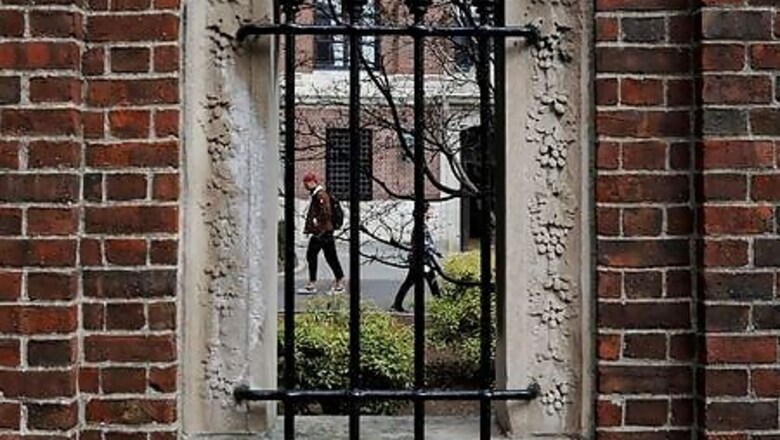
views
AMSTERDAM Universities, waiting to see how hard the coronavirus pandemic will hit overseas enrolments and government grants, have gone on a borrowing spree in the bond markets this year that outpaces a rise in companies’ bond sales.
The COVID-19 crisis is threatening to redefine higher education around the world, with students sent home and classes moved online. But the economic fallout will also hit universities’ finances as tuition fees, especially from overseas students, is likely to fall while funding from governments could also be hit.
Yet that has not stopped investors from lending to universities at record-low rates. And the institutions have rushed to capitalise on the availability of cheap funding.
Bond issuance by universities is only a tiny part of the global bond market, but sales by universities worldwide are more than double full-year 2019 levels at $11.4 billion in the year to date, Dealogic data shows.
In comparison, global debt issuance by companies is at around 75% of 2019 volumes, based on Dealogic data.
“We’re seeing a lot of what we call pull-forward issuance,” as universities brace for another lockdown in autumn, said Fitch analyst Emily Wadwhani, who specialises in higher education finance.
Among those to issue was the AAA-rated University of Virginia, which raised $600 million in July to fund projects such as new dormitories. It paid a 2.256% yield, the lowest ever for a 30-year “taxable” university issue.
Taxable corporate debt attracts a broader investor pool than municipal bonds, another source of funding for U.S. universities.
“The market was incredibly advantageous. We have both (current and future) capital needs, but we also thought that given the opportunity to go into the market, we could advance fund,” J.J. Davis, chief operating officer at the University of Virginia, said.
“At these rates, why wouldn’t you?”
While U.S. universities accounted for 24 deals in the year-to-date, based on Dealogic data, institutions from Canada, Brazil, Singapore and Australia also sold bonds.
The market in publicly disclosed university bonds is about $50 billion-plus, according to Dealogic.
Of this, $36.3 billon is from U.S. universities, which typically get a lower level of state support compared with European peers.
Existing university issues, especially from top-tier names such as Oxford and MIT, have shared in this year’s broader bond market rally. Yields on the S&P Municipal Bond Higher Education Index have fallen to 2.7%, near record lows.
‘HAVES AND HAVE-NOTS’
The coronavirus crisis may widen the gap between top-tier universities and lesser-known ones. This year’s borrowers mostly comprise top-rated names such as Virginia, Harvard and Stanford.
“The market is starting to distinguish between the haves and the have-nots,” said Cooper Howard, fixed income strategy director at Charles Schwab, which manages $3.25 trillion of assets.
Credit rating agency Moody’s said in March in a report on U.S. higher education that the outlook for the U.S. education sector was changing to negative from stable.
“For fiscal 2021, universities face unprecedented enrollment uncertainty, risks to multiple revenue streams, and potential material erosion in their balance sheets.”
Even university issuers with high credit ratings have had to show investors how they will tackle the pandemic hit.
“(Issuers) have done a ton of work around stress-scenario analysis,” a U.S. banker involved in some of the deals said.
He said 30-40 universities with lower credit ratings were waiting for clarity on admissions and tuition fees before issuing debt.
British universities, already facing an added Brexit complication, have been absent from fundraising via the bond market this year, though they often favour hard-to-track private placements.
Dialogue around bond financing fell away amid spring uncertainty, said Fraser Dixon, JPMorgan’s head of UK and Ireland debt capital markets, who arranged Oxford’s debut bond deal in 2017.
Financial pressures are increasing. A report from the University and College Union – the union for university staff in Britain – predicted British universities will lose 2.5 billion pounds next year in tuition fees alone.
And in the United States, student enrolments will decline by 5-20% this year, Fitch predicted.
“It’s certainly difficult to judge what the university experience might look like in the future,” JPM’s Dixon said.
Disclaimer: This post has been auto-published from an agency feed without any modifications to the text and has not been reviewed by an editor




















Comments
0 comment